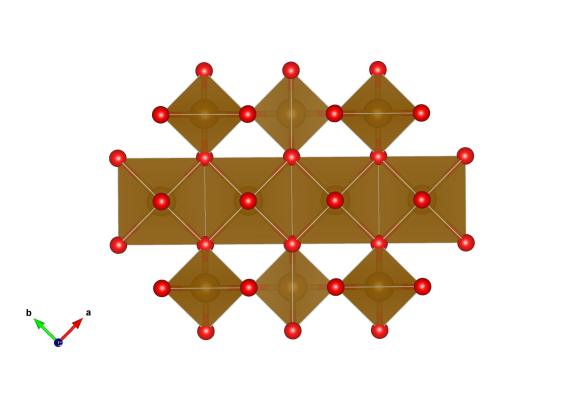Biominerals #1 – Magnetite
Today we'll start a small theme of five posts on the crystal structures of minerals that are made by living creatures, biominerals. We’ve met a couple of these before already, aragonite, calcite carbonate and a mineral we humans make, hydroxylapatite. But there's room to feature a few more!
What does it look like?

The structure of magnetite. The gold atoms (and shapes) are the iron and the red atoms are the oxygen. Image generated by the VESTA (Visualisation for Electronic and STructural analysis) software http://jp-minerals.org/vesta/en/
What is it?
Magnetite is a tough, dense, and black iron mineral, which is formed with a mixture of iron species – iron in its 2+ valence state, and in its 3+ valence state. This can be directly seen in its crystal structure, which is a mixture of octahedral (the 2+ iron) and tetrahedral (3+ iron) iron and oxygen shapes. This mixture (the chemical name of this materials is Iron(II)Iron(III)oxide) is one of the three iron oxides found on the surface of the Earth, The others being hematite (Iron(III) oxide) and Wüstite (Iron(II) oxide), which itself is very rare.
As a biomineral magnetite is found all over, from the sea to land-based creatures. In a particular type of mollusc – a chiton – magnetite is formed on their teeth. The magnetite mixes with organic fibres to make a strong coating, but it does mean that they have black teeth. Closer to home, there's evidence that magnetite can form in our own brains. Scientists are still puzzling about why this is, and what impact it has on us.
Where did the structure come from?
The structure of Magnetite was first worked out by one of the founders of the field. William H. Bragg, who first published the structure in 1915 – the year he won the Nobel Prize in Physics along with his son. The structure he determined, which we've pictured here, is #1011032 in the Crystallography Open Database.






